Transportation
Speed a Major Factor in Tuesday's Fatal Amtrak Derailment
The death toll has risen to seven in the May 12 derailment in Philadelphia. NTSB confirmed the train was traveling over 106 mph on a curve where the speed limit is 50 mph. Positive Train Control, which would have stopped the train, was not present.

How Developers Can Help Make Streets Safe for Children Again
It will take a broad coalition of interests to once again make it safe for "free-range kids" to walk and bike on the streets of American communities.
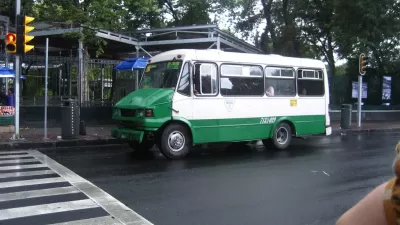
Op-Ed: Microtransit Shouldn't Replace Public Transit
Halfway between public transit and private cars, new and varying forms of 'microtransit' threaten to out-compete traditional public services. Concerns about equity, inclusion, and employee compensation follow.
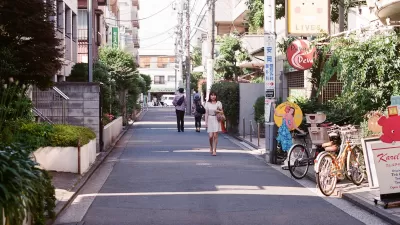
On the Pros and Cons of Driveways
Whether driveways are anti-urban or 'anti-pedestrian' depends on how we segregate street uses. As shared spaces where they cross sidewalks, driveways inform the wider question: what makes for a good street?
Amtrak Train Derails Near Philadelphia—At Least Six Confirmed Dead
A northbound Amtrak Northeast Regional train derailed after leaving the Philadelphia Amtrak station around 9:30 p.m, on May 12. The scene was called a disaster, with the first of the seven cars that derailed severely crushed. No cause was given.
Oakland Crosswalk Engineering Mistimes Walkability Goals
A well-informed, social media savvy observer is shedding light on a seemingly small change with big impacts on the quality of life available to pedestrians along Oakland's streets.
Gentrification Concerns Ride Light Rail in Seattle
As Seattle considers a $900 million levy proposed by Mayor Ed Murray, locals are already wondering if new transit investments are precursor of unwanted gentrification.
What Makes Left Turns So Dangerous?
After breaking down the reasons why left turns are so dangerous, it's also obvious how difficult a problem they are to solve.

The Real Story Behind the Death of Streetcars in the United States
Yes, there was a conspiracy led by General Motors to replace streetcars with their buses in the 1930s. But streetcars were dying well before then, due to competition with the automobile and other reasons apart from nefarious corporate collusions.
Water Taxis and Ferry Service Pitched for Detroit's Waterfront
Local port and tourism officials are pushing dual plans to add waterborne transit to Detroit—one proposed ferry route would even connect to Canada.
State Bill Would Add TIFs Along Transit Lines in Chicago
Expanded use of tax increment financing is on the table in Chicago—a city that invests less than its peers on building and running transit.
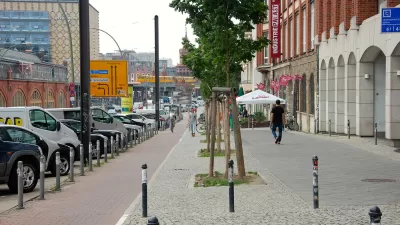
Bike Lanes Help Sidewalks, Too
A growing body of evidence shows that bike lanes put more people on bikes while also helping those people on bikes stay off sidewalks. The latest example: Honolulu.
Los Angeles Metrolink to Relieve Caltrain on the Crowded San Francisco Peninsula
The San Francisco to San Jose Caltrain commuter rail line continues to set ridership records, but capacity has not increased, much to riders' chagrin. Starting today, four train sets will add a sixth car, courtesy of Metrolink commuter rail.
Surveying the Biking Gender Gap
A survey of the relevant studies, articles, and ideas about why women ride bikes so much less than men.
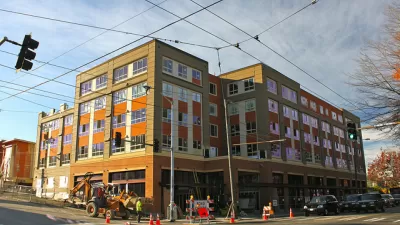
Seattle Densification Strategy: Build Apartments Without Parking
Not just any apartments, only those served by frequent transit. Developers will still have a "mobility" requirement: In lieu of a parking space, they'll need to provide tenants with transit passes and memberships in car and bikeshare services.
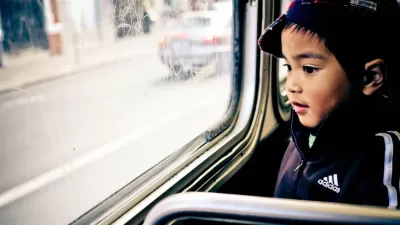
The Key to Escaping Poverty: Transportation
A recent study that connected place to opportunity also includes findings about the factor most likely to influence economic success: access to transportation.
San Francisco Launching Raised Bike Lane Program
The city's Municipal Transportation Agency will construct a block of raised bike lane on Valencia Street as a showcase for more such projects to come.
New App Shares Connected Car Data to Government, Businesses
This is what "smart cities" technology looks like: A new product called Inrix Insights offers planners and businesses a platform by which to access the data created by the use of connected cars.
Public Review Underway for Pittsburgh BRT Proposal
The public is getting a chance to respond to the idea of building a bus rapid transit line along a heavily traveled corridor between Pittsburgh and Oakland to the east.
Gas Tax Hike Showdown Headed to Nebraska
Strong leadership from the governor may be the most important factor in passing state gas tax increases. But what happens when the governor opposes increasing the gas tax and the legislature supports it? Nebraska is about to find out.
Pagination
Urban Design for Planners 1: Software Tools
This six-course series explores essential urban design concepts using open source software and equips planners with the tools they need to participate fully in the urban design process.
Planning for Universal Design
Learn the tools for implementing Universal Design in planning regulations.
Smith Gee Studio
City of Charlotte
City of Camden Redevelopment Agency
City of Astoria
Transportation Research & Education Center (TREC) at Portland State University
US High Speed Rail Association
City of Camden Redevelopment Agency
Municipality of Princeton (NJ)


































